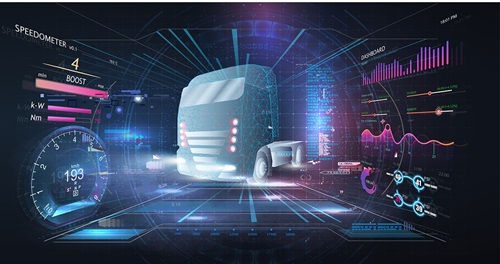
Both are low emission vehicles that run on electric power
Battery Electric Vehicles operate using energy stored in batteries, while Fuel Cell Electric Vehicles are powered by a fuel cell that creates electricity using hydrogen as a fuel, with water and heat as the only byproducts. Wider adoption of these vehicles and their low-emissions technology represent a significant path to decarbonizing commercial transportation.
Cutting-edge software and electronics play a crucial role in various aspects of operations, from managing power in the powertrain (comprising the electric motor, battery, and fuel cell) to controlling electronic components throughout the vehicle and human interface systems like throttle response and range estimates. This article from Cummins gives an overview of how essential software, and electronics components work in BEV (Battery Electric Vehicle) and FCEV (Fuel Cell Electric Vehicles) technologies.
BEVs and FCEVs share common powertrain components such as fuel cells, battery packs, inverters, and controls, but with some differences: in BEVs the internal combustion engine is replaced with batteries. FCEVs on the other hand, combine fuel cells with batteries. Vehicle software is important in both technologies and plays a role in managing power distribution and heat regulation. BEVs need advanced software to maintain battery performance and safety, managing temperature, charging, and discharging. While electronic components ensure precise power delivery for efficient performance. FCEVs too use similar software to optimize power distribution between the battery and the fuel cell. The software also helps in monitoring fuel consumption.
The chassis is made up of frame, wheels, brakes, and suspension. It is important for keeping the vehicle stable and easy to control. Electronic systems like Electronic Stability Control (ESC) help make it safer by applying brakes on certain wheels, which helps keep the vehicle steady and maintain direction when you need to make quick turns. Additionally, there are software-operated air suspension systems that change the height of the vehicle depending on speed and condition of the road. This helps to enhance aerodynamics and make it more comfortable to drive long distances.
The body includes the vehicle's structural and interior components. The body utilizes power electronics in the vehicle for features like automated door locks and advanced safety systems. Vehicle software and electronics use sensors and electronic control units (ECUs) to manage everything from window operations to driver-assistance systems, increasing both convenience and safety.
Electronics and software in vehicles can not only help control climate, lighting, and multimedia systems, but can also provide real-time vehicle data. Electronics also feed critical data to the onboard computers, ensuring systems like automatic headlight adjustment and rain-sensing wipers operate without a hitch.
The Autonomous Driving or Advanced Driver Assistance Systems (ADAS) includes sensors, radars and controllers that provide critical driver assist and automation features. These features include controlling signals going to the steering, braking and powertrain controllers, using real time and high-powered control units running advanced software.
Connected services are where vehicle software plays a significant role by extending the vehicle's functionality. BEVs often feature an app that allows users to remotely check the charge level, start the vehicle, or even pre-condition the cabin temperature. Navigation systems also use connectivity to provide live traffic updates, ensuring efficient route management.
By embedding intelligent software and electronics throughout the vehicle, BEVs and FCEVs can enhance user experience, and help meet environmental goals. As these technologies evolve, they will further lead the charge towards a cleaner, and more reliable transportation future.
In the next issue we will explore the role of software, electronics and other factors. Source